Robertta A. Uhl - Wonderful Ways with Washi: Seventeen Delightful Projects to Make with Japanese Handmade Paper
Here you can read online Robertta A. Uhl - Wonderful Ways with Washi: Seventeen Delightful Projects to Make with Japanese Handmade Paper full text of the book (entire story) in english for free. Download pdf and epub, get meaning, cover and reviews about this ebook. year: 2002, publisher: Tuttle Publishing, genre: Art / Computer. Description of the work, (preface) as well as reviews are available. Best literature library LitArk.com created for fans of good reading and offers a wide selection of genres:
Romance novel
Science fiction
Adventure
Detective
Science
History
Home and family
Prose
Art
Politics
Computer
Non-fiction
Religion
Business
Children
Humor
Choose a favorite category and find really read worthwhile books. Enjoy immersion in the world of imagination, feel the emotions of the characters or learn something new for yourself, make an fascinating discovery.
- Book:Wonderful Ways with Washi: Seventeen Delightful Projects to Make with Japanese Handmade Paper
- Author:
- Publisher:Tuttle Publishing
- Genre:
- Year:2002
- Rating:5 / 5
- Favourites:Add to favourites
- Your mark:
Wonderful Ways with Washi: Seventeen Delightful Projects to Make with Japanese Handmade Paper: summary, description and annotation
We offer to read an annotation, description, summary or preface (depends on what the author of the book "Wonderful Ways with Washi: Seventeen Delightful Projects to Make with Japanese Handmade Paper" wrote himself). If you haven't found the necessary information about the book — write in the comments, we will try to find it.
The Japanese have long used colorfully printed papers to decorate anything from boxes to walls. This traditional paper craft is known as washi. Washi paper is made by hand from the fibrous bark of three indigenous plants. It is known for its strength, durability, and flexibility, and is available in a rich array of colors, textures, weights, and patterns. Elements of Japans great textile tradition are reflected in its cultural motifs (such as kimonos, fans, and kabuki actors), as well as in its classic designs from nature (such as flowers, bamboo, and cranes). Wonderful Ways with Washi contains 17 creative designs for decorating commonly available objects such as milk cartons, boxes, and eggs -- for use in home decor, as gifts, or for special occasions. The book includes step-by-step diagrams, color photographs of the finished projects, and imaginative ways to display the finished crafts. The projects include a Kosheshi doll, a cherry blossom box, a crane pen and pencil holder, obi wall hangings, magnets, and ornaments, plus many more.
Robertta A. Uhl: author's other books
Who wrote Wonderful Ways with Washi: Seventeen Delightful Projects to Make with Japanese Handmade Paper? Find out the surname, the name of the author of the book and a list of all author's works by series.

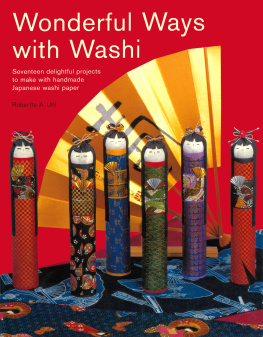
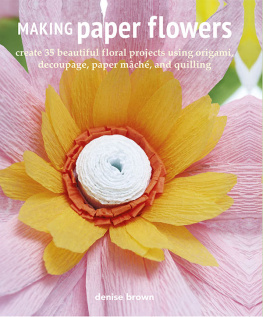
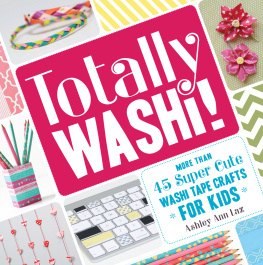
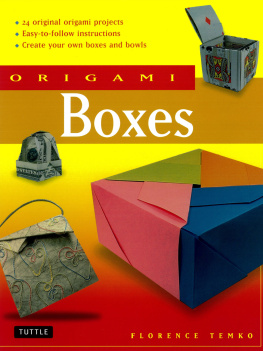
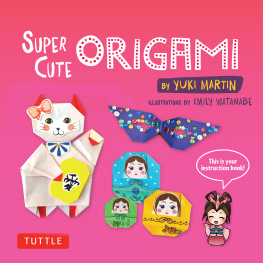
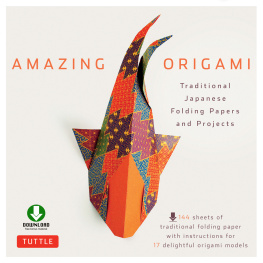

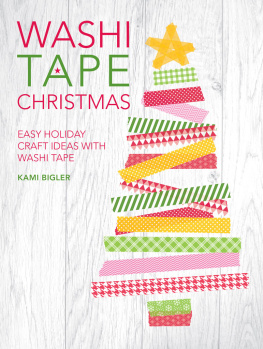
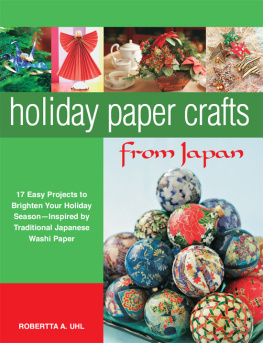
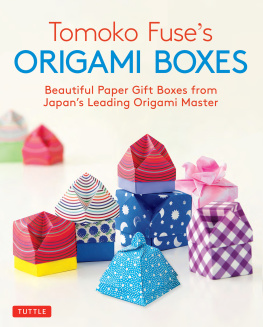
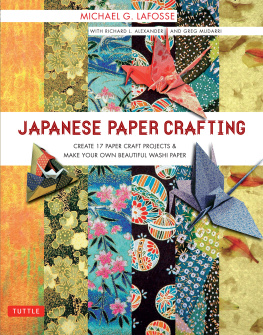
 Decide which size box you want to make and cut out the relevant patterns from the printed Washi and cardboard PREPARING THE PRINTED WASHI AND CARDBOARD Printed Washi Large (gallon) 1 rectangle (16" x 6") 2 squares (3" x 3") 1 square (5" x 5") 1 square (7" x 7") Cardboard Large (gallon) 1 square (3" x 3") 1 square (4" x 4") Small (quart) 1 rectangle (12" x 6") 2 squares (2" x 2") 1 square (4" x 4") 1 square (5" x 5") Small (quart) 1 square (2" x 2") 1 square (3" x 3") MAKING THE LID
Decide which size box you want to make and cut out the relevant patterns from the printed Washi and cardboard PREPARING THE PRINTED WASHI AND CARDBOARD Printed Washi Large (gallon) 1 rectangle (16" x 6") 2 squares (3" x 3") 1 square (5" x 5") 1 square (7" x 7") Cardboard Large (gallon) 1 square (3" x 3") 1 square (4" x 4") Small (quart) 1 rectangle (12" x 6") 2 squares (2" x 2") 1 square (4" x 4") 1 square (5" x 5") Small (quart) 1 square (2" x 2") 1 square (3" x 3") MAKING THE LID  With the glue stick, paste the appropriate piece of printed Washi to the correct size cardboard (7" x 7" Washi to the 4" x 4" cardboard; 51/5" x 5" Washi to the 3" x 3" cardboard). Glue down opposing sides 1 first.
With the glue stick, paste the appropriate piece of printed Washi to the correct size cardboard (7" x 7" Washi to the 4" x 4" cardboard; 51/5" x 5" Washi to the 3" x 3" cardboard). Glue down opposing sides 1 first.  Make a handle by knotting the cord near the top.
Make a handle by knotting the cord near the top. 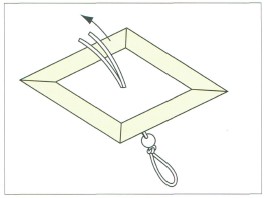 Using the awl or the point of the scissors, make a hole in the center of the larger piece of cardboard. Decide on the knot you want. Pull the loose ends of the cord through the hole.
Using the awl or the point of the scissors, make a hole in the center of the larger piece of cardboard. Decide on the knot you want. Pull the loose ends of the cord through the hole. 
 Tape the loose pieces of cord to the cardboard. Hot glue the unfinished sides of the cardboard together, centering them.
Tape the loose pieces of cord to the cardboard. Hot glue the unfinished sides of the cardboard together, centering them. The top of the lid with a bead handle will look like this.
The top of the lid with a bead handle will look like this.  The top of the lid with the knot handle will look like this. MAKING THE BOX
The top of the lid with the knot handle will look like this. MAKING THE BOX  Measure 2" up the side of the milk carton (large or small) and mark all round. Cut off the bottom with the cutting blade.
Measure 2" up the side of the milk carton (large or small) and mark all round. Cut off the bottom with the cutting blade. 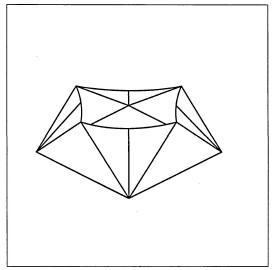 Push the corners of the carton in, along the scored lines, to form additional sides.
Push the corners of the carton in, along the scored lines, to form additional sides.  Measure 4" up the side of the carton and mark all round.
Measure 4" up the side of the carton and mark all round. 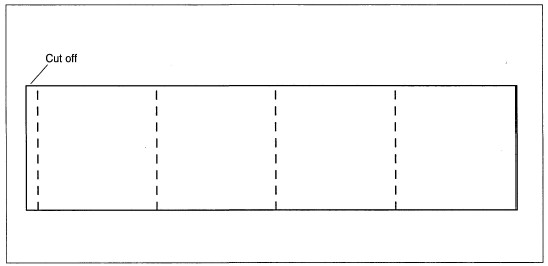 Find the seamed side of the carton. Carefully pull or cut the carton apart, then cut off the extra flap.
Find the seamed side of the carton. Carefully pull or cut the carton apart, then cut off the extra flap. 